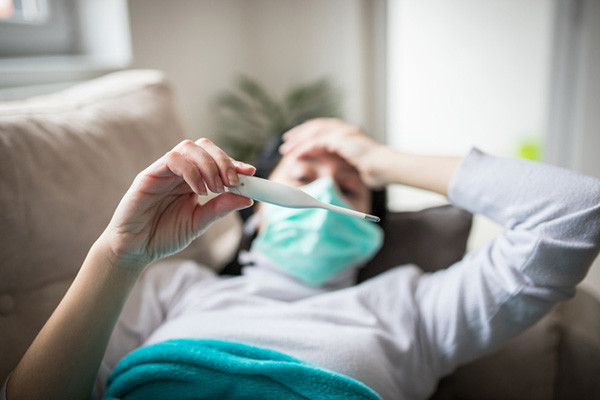Paxlovid rebound: What you need to know
- Reviewed by Michelle Chan, MD, Contributor; Editorial Advisory Board Member, Harvard Health Publishing

Paxlovid rebound describes a resurgence of COVID-19 after you finish taking the antiviral drug combination known as Paxlovid. People with Paxlovid rebound don't always feel sick, but they could spread COVID-19 to others.
What is Paxlovid rebound?
Paxlovid rebound typically happens within a week after you've taken Paxlovid to treat COVID-19. With Paxlovid rebound, either your COVID-19 symptoms return or you test positive after testing negative. Sometimes it's both.
Paxlovid rebound is usually milder than the initial illness. The main concern is spreading the virus to others.
Some people experience a COVID-19 rebound even if they did not take Paxlovid. According to a report from the FDA, two large clinical trials showed that a return of COVID-19 symptoms happened at a similar rate in people who had COVID-19 but did not take Paxlovid and those who did.
However, a small, observational study from Harvard Medical School found that about 20% of people who took Paxlovid had a positive COVID-19 test, and shed live and potentially contagious virus after they had recovered and tested negative. By contrast, the study found that rebound happened about 2% of the time in people who did not take Paxlovid.
There is much we still do not know about Paxlovid rebound, and more research is needed.
What is Paxlovid and who should take it?
Paxlovid is a prescription medicine made up of two antiviral medications: nirmatrelvir with ritonavir. It works to stop the COVID-19 virus from multiplying, and reduces the amount of it in your body. Paxlovid pills are taken twice a day for five days.
Paxlovid is used to treat mild to moderate COVID-19 in people who are at high risk for severe COVID-19, hospitalization, or death. The drug was shown to reduce hospital admission or death by about 88% in people who took Paxlovid within five days of when their symptoms started.
The COVID-19 treatment guidelines from the National Institutes of Health state that the possibility of rebound is not a good reason for avoiding Paxlovid if it's prescribed for you. For people at high risk of getting very sick or dying from COVID-19, the benefits of Paxlovid far outweigh any risk of a rebound.
How to know if you're experiencing Paxlovid rebound
If you've taken Paxlovid and have recovered but then feel symptoms like coughing, sore throat, headache, and sore muscles coming back, you may be experiencing a Paxlovid rebound. Rebound symptoms are almost always milder than your initial symptoms when you first had COVID-19.
But you can't rely on symptoms — or a lack of them — to know whether or not you've had a Paxlovid rebound. The Harvard study showed that less than half of people who tested positive for rebound had symptoms. If your symptoms haven't returned but you are concerned about rebound, you can take another COVID-19 test.
Managing Paxlovid rebound
If you experience Paxlovid rebound — or if your COVID-19 symptoms return even if you didn't take Paxlovid — the CDC recommends that you stay home and away from others until after your symptoms have started to improve and you have been fever-free without fever-reducing medications for at least 24 hours. Manage symptoms with rest, fluids, and over-the-counter medications.
In addition:
- Wear a well-fitting, high-quality mask around others.
- Don't share personal household items, like cups and towels.
- Practice good hygiene. Wash hands regularly, and sneeze and cough into a tissue or your elbow instead of your hands.
- Improve ventilation at home — by opening windows, for example.
- Call your doctor if your symptoms start to get worse.
About the Author

Lisa Catanese, ELS, Health Writer
About the Reviewer

Michelle Chan, MD, Contributor; Editorial Advisory Board Member, Harvard Health Publishing
Disclaimer:
As a service to our readers, Harvard Health Publishing provides access to our library of archived content. Please note the date of last review or update on all articles.
No content on this site, regardless of date, should ever be used as a substitute for direct medical advice from your doctor or other qualified clinician.












